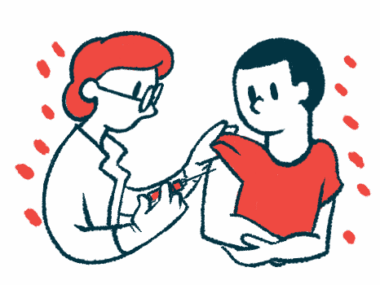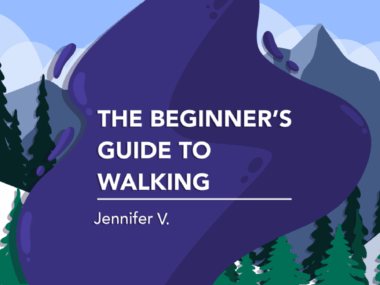A new normal: Adjusting to life after an NMOSD relapse
With worsening symptoms, I'm trying to face change that might be irreversible
Written by |

When I felt the familiar heaviness in my body, I bravely faced it. “It’s OK,” I told myself. “I’ve been here before and recovered. I can do this.”
As I lay in the hospital bed, a prisoner to the many doctors and specialists who checked on me throughout the day (none of them said I could go home), my feelings turned to disbelief. “I can’t believe I’m living this again,” I thought. “Why is this happening to me?”
When I struggled to get to the bathroom, my emotions changed to impatience and anger. “Why can’t my body just cooperate? I did everything I was supposed to do. I don’t have time for this.”
I was finally discharged and went home, but was still shaky. My legs moved well enough, but they felt heavy and exhausted and I had to use a cane. My new normal was a fraction of my previous mobility, yet I still courageously believed I could overcome this relapse.
For those living with neuromyelitis optica spectrum disorder (NMOSD), relapses like this are more than just a setback. It’s possible that my loss of vision or paralysis might be permanent, which would rupture my long-standing stability and independence. It’s a jarring reminder that my body is at war with itself.
Adapting even as I feel defeat
After I recovered from several optic neuritis relapses last year, my latest episode was a particularly cruel transverse myelitis attack. My legs, which once carried me down steep mountains on my snowboard, now spasm if I get up too quickly. My arms, which could once dead lift 120 pounds, now struggle if a grocery bag is too heavy. My world, once navigable, has shrunk into a landscape of obstacles and tough decisions. I no longer have the energy to get through a full day. I’m good at pretending, but I wish I weren’t.
NMOSD relapses are cruelly unpredictable. Some people fully recover from them, regaining their strength after weeks or months of intensive rehabilitation. Others are left with permanent damage, such as diminished vision, weakened limbs, and an altered sense of autonomy. This uncertainty is its own kind of torture, which is what I’m living through now.
I want to believe that my body’s full function will return after this latest relapse, but I continue to have a gnawing doubt. What if this time things don’t go back to how they were? What if this reduced ability is my new normal?
I’ve returned to working with my physiotherapist, but after my first session, I felt a sense of defeat. Things I used to do around the gym were now too difficult for me. I’ll need countless hours of physiotherapy, with no guarantee of results.
I’m trying to stay positive and focus on each day, but for every tiny victory there’s more quiet devastation. Getting down the stairs alone, walking a farther distance without triggering a spasm — these are hard-won battles. But I also have moments of stark grief, of feeling betrayed by a body that should be healing but instead feels foreign and unreliable.
My friends check in on me, sending messages of encouragement, but they can’t do that forever, especially if I never fully recover. I’ve politely reminded them that life goes on, and so should they. I’m coming to terms with the reality that my previous normal may never return. I might have to adapt and recalibrate my expectations and abilities.
I know recovery isn’t linear. Some days bring glimmers of hope, while others cause overwhelming fatigue and frustration. The only certainty is that NMOSD is relentless, and each relapse has the potential to redefine my future.
So I wait. I fight. I learn to grieve the body I once had while making space for the one I have now. Currently, the only certainty is uncertainty.
Note: Neuromyelitis News is strictly a news and information website about the disease. It does not provide medical advice, diagnosis, or treatment. This content is not intended to be a substitute for professional medical advice, diagnosis, or treatment. Always seek the advice of your physician or other qualified health providers with any questions you may have regarding a medical condition. Never disregard professional medical advice or delay in seeking it because of something you have read on this website. The opinions expressed in this column are not those of Neuromyelitis News or its parent company, Bionews, and are intended to spark discussion about issues pertaining to neuromyelitis optica spectrum disorder.







JLynne
I'm so sorry you're going through this. It scares me to hear because I was dx in 2011/2012 and have been on Rituxan since mid-2012 without a relapse. For most of the day I can (almost) forget I have NMO - although the end of the day, with the heavy legs and exhaustion, reminds me. But I cautiously hope, after all this time, there will never be a relapse. I note you've had several ON relapses over the years - but this was the first TM relapse since your 2010 dx? Have you been on the same preventative all this time? I know from reading your column that you will work hard to recover, no deficit will be because you didn't try your hardest to come back. Good luck and prayers be with you.
Jennifer V.
Hi there. I hope I haven't scared you. I'm glad to hear that you haven't had a relapse since 2011/12. You sound a lot like me, trying our hardest to forget that we have NMOSD until the end of the day when it catches up to us. You're right that I've had several ON relapses since my diagnosis in 2010, but this was my first TM relapse since then. I was on Cellcept from 2010 till 2020 before I had a major ON relapse. I switched to Enspryng for 4 years, Uplizna for a period of time and now Ultomiris. Thank you for your prayers. I hope you remain relapse free. Be well and thanks for reading!